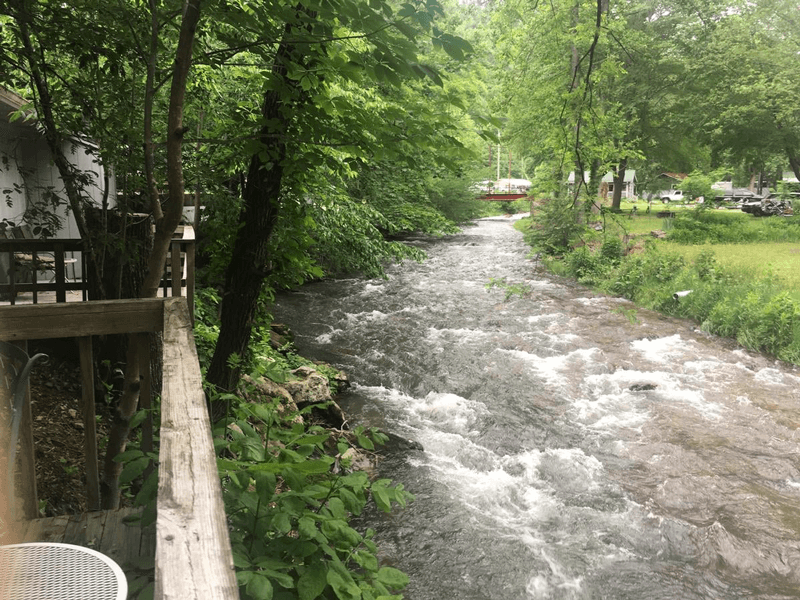The Great Smoky Mountains National Park is the most visited national park in the country. With more than 14.1 million visitors in 2021 alone, its unsurpassed natural beauty continues to draw in larger and larger crowds of tourists.
But with these record-breaking crowds comes the potential for damage and destruction to the ecosystem. Case in point: piles of trash scattered throughout the park, overflowing parking lots, roadside soil erosion, the trampling of vegetation, and traffic interrupting wildlife crossings.
The park’s ancient mountains are a critical sanctuary for protected animals, including 65 species of mammals, over 200 varieties of birds, 67 native fish species, and more than 80 types of reptiles and amphibians. Its diverse environment provides an ideal habitat for over 1,600 species of flowering plants, including 100 native tree species and over 100 native shrub species. It’s also home to three federally listed threatened and endangered plant species.
In order to ensure that the park stays in its natural and pristine condition, we must learn to travel sustainably. Here are ten simple and easy ways you can minimize your environmental impact on your next trip to the Smoky Mountains.
-
Plan Before You Go
The best way to minimize your environmental impact on an outdoor adventure is to prepare in advance. Do your research. Review the Great Smoky Mountain National Park’s regulations so you know what they allow or prohibit. Check the weather for rain or snow, depending on the time of year you’re visiting. Hiking through muddy or soggy trails can cause damage to the soil and the plants who depend on it.
-
Stay on Marked Trails
The folks at Great Smoky Mountains National Park haven’t spent time and money building those trails and pathways and putting up ropes for nothing. Designated trails are there to provide safe and easy access to beautiful places that we wouldn’t otherwise be able to see. But they are also vital tools for conserving the fragile ecosystem.
With over 850 miles of trails to explore, hiking is one of the most popular activities in the park. If you stay on the designated trail, you’ll be doing your part to reduce damage to vegetation and protect the natural habitats of birds and other wildlife.
-
Respect the Wildlife
When you’re exploring the great outdoors, remember that it’s home to wildlife like elk, bear, and deer. In the same way you wouldn’t want someone trampling through your home, they deserve respect too.
Keep your distance. Bring along a pair of binoculars so you can enjoy the animals safely. And avoid feeding them. This increases human interaction and can lead to injuries or death, possibly for both you and the animal. For example, if bears get used to eating human food in a specific area, they will keep coming back. And if that bear gets too close to humans and poses a threat, they’ll likely be euthanized. They know how to find their own food. Let them. Keep the animals wild and keep yourself safe.
-
Bring a reusable water bottle
You’ll definitely want to stay hydrated while enjoying the outdoors, but please use a reusable water bottle. Plastic water bottles account for 20% of trash in national parks, so something as small as refilling your reusable water bottle can make a huge difference. One plastic bottle can take hundreds of years to decompose, and when left behind in the park, it also poses a risk to the local wildlife.
-
Be Considerate of Others
There’s a reason you wanted to escape into nature, right? Peace and quiet, reflection, time alone. While the Great Smoky Mountains National Park covers over 500,000 acres, sections of it can get crowded at certain times of the year. Be considerate of your fellow travelers by keeping the noise levels down, parking in established areas, and following the rules and regulations of the park – because, yes, they apply to you too.
-
Stay at Eco-Friendly Hotels
Consider staying in an eco-friendly hotel to help minimize your environmental impact. A lot of accommodations around the park have made the environment a priority. Look for hotels that offer recycling programs, implement energy-saving measures and use water-saving equipment. Opting for a locally owned and operated hotel is also a great way to go. Visit the hotel’s website to see if it is associated with any certification programs or partner with any local environment focused organizations.
-
Remember the Three R’s
In making a conscious effort to leave no trace and reduce the amount of waste you leave behind, remember the 3R’s. Reduce. Reuse. Recycle. A reusable tote or container is ideal, but if you don’t have one, then look for trash cans or marked recycling bins around the park for your trash.
If you’re planning a trip to the Great Smoky Mountains National Park this year, consider these seven ways and others to minimize your environmental impact. Something as simple picking up your trash or drinking from a re-usable water bottle can go a long way in keeping the park beautiful for you today and for future generations to enjoy.
To learn more about how you can minimize your environmental impact and wildlife safe passage in the Great Smoky Mountains, check out the Gateway to the Smokies podcast with Joseph McElroy.




